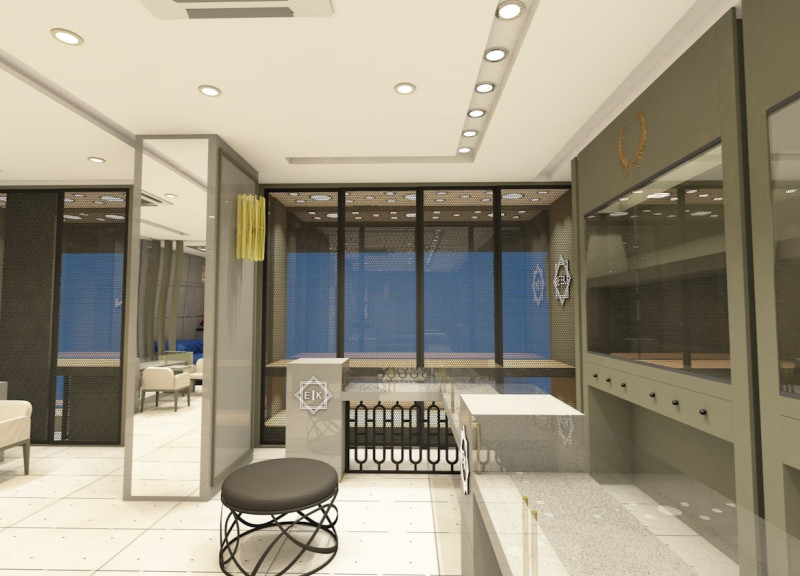5 key facts about this project
The architectural design centers around a clear concept that focuses on organization and usability. Set in a thoughtfully chosen environment, the design aims to blend with its context while fulfilling its intended function. At the heart of the design is the repeated use of the acronym "EIK," which serves as a guiding theme and shapes the overall spatial arrangement and conceptual message conveyed through the panels.
Layout and Organization
The arrangement of the space is carefully structured, resulting in a clear flow of information. This systematic design highlights the integration of numeric data and symbolic language, such as "100000" and "ՄՄՄՄՄՍ." These elements create depth by providing cultural or technical references. Viewers are invited to explore these layers, engaging with the architecture in more than one way.
Visual Clarity and Aesthetic
Key features of the design prioritize visual clarity over decorative elements. By minimizing ornamentation, the project maintains a straightforward aesthetic that enhances understanding. Each panel is arranged with intention, contributing to a cohesive message that facilitates interaction with the space. This approach ensures that the design communicates effectively without overwhelming the viewer.
Spatial Experience
The careful arrangement of elements also enhances the experience within the space. Users are encouraged to navigate through the areas smoothly, promoting meaningful interactions. This focus on usability aligns with the design's goal of creating a welcoming environment that serves its occupants well.
Symbolic Language
The presence of symbolic references throughout the design deepens the connection between the space and its users. These references invite contemplation and encourage visitors to engage with the architecture on multiple levels. While specific materials are not mentioned, the thoughtful design choices highlight a commitment to clarity and expression.
The interaction between these elements leads to a design that emphasizes functionality and encourages exploration. The clear communication of ideas through form creates an environment that resonates with those who enter it. Each aspect of the design is attuned to foster understanding, making it a space that is accessible and inviting.


















































